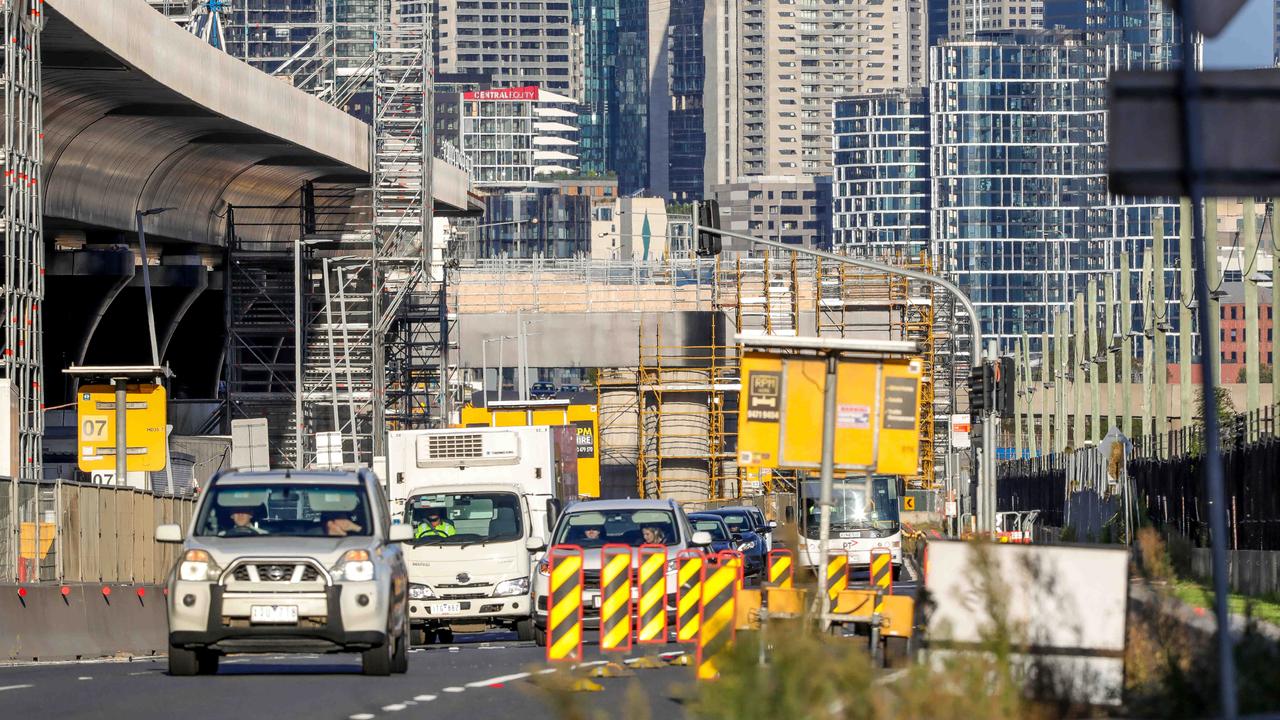Long wait for new heart amid drought of paediatric heart donors
The heart is the linchpin of life, but slowly and quietly in the first weeks after Ellie Martin was born, hers began to come undone. This is the story of her 400-day wait for a second chance at life. Don’t worry, it has a happy ending.
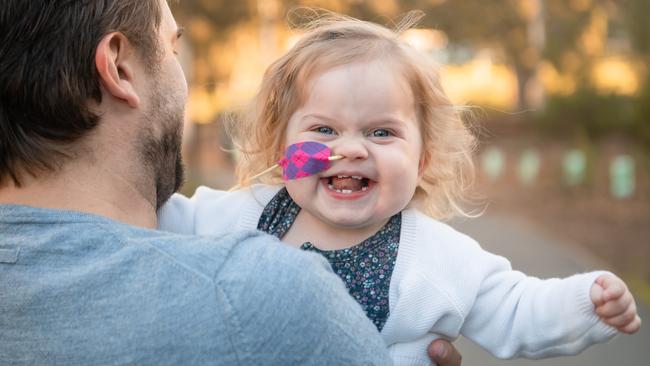
News
Don't miss out on the headlines from News . Followed categories will be added to My News.
It is the linchpin of life, but slowly and quietly in the first few weeks of Ellie Martin’s life it started coming undone.
It was supposed to be a dream year for newlyweds Andrew and Kylie.
Family life on Sydney’s north shore was going to be peppered with picnics, trips to the beach and long walks along the ocean.
They had mapped out 12 months maternity leave with holidays and weekends away to show off their long-awaited daughter.
But by five weeks after birth, they were largely housebound as Ellie struggled to take feeds by either breast or bottle and could barely hold any milk down.
Unbeknown to them, that heartbeat the couple had held their breaths to hear at each pregnancy scan, was slowly getting weaker.
One Sunday morning, Andrew could only get 10ml of milk into his daughter — and it all came back up.

They expected to be told they were overanxious parents of a baby with reflux when they attended their local emergency department.
But by that night their six-week-old daughter was on life support. Baby Ellie was in heart failure.
She was found to have a rare combination of problems that saw her heart become stiff and enlarged, and without the strength to pump properly.
The next eight weeks were spent using medications and breathing support to take pressure off the weak organ, but she remained unstable.
Doctors told it to the couple straight; this is the healthiest Ellie is ever going to be. Her only chance at survival was a new heart. They would not be able to leave the hospital until they got one.
“Every time we gave Ellie an opportunity to prove her strength she would generally respond,” said Andrew.
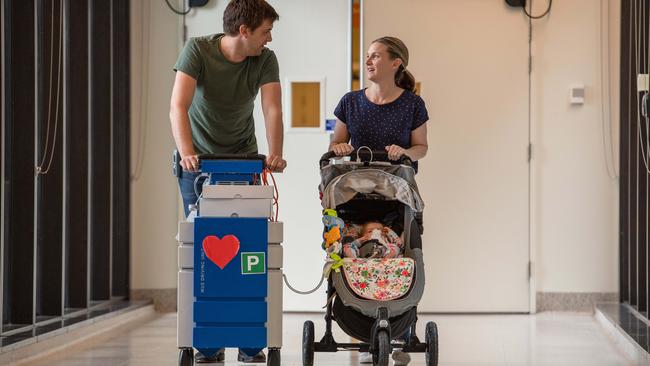
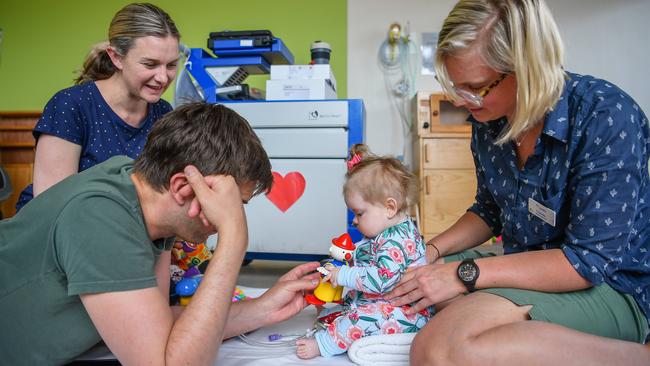
“The best we could do was support her, and give her the opportunity to keep fighting.”
Saying yes to a chance of a new life meant leaving their friends, family and jobs, and packing up their home and newly set-up nursery to be sent to the only place in Australia that gives children new hearts — the Royal Children’s Hospital in Melbourne.
The Herald Sun has followed Ellie for the past year; amid one of the longest droughts for paediatric heart transplants, and amid a growing number of children being kept alive on artificial hearts as they wait for a donor.
By the time Ellie came to the RCH, she had already been in hospital in Sydney for more than five months.
After meeting the RCH team, led by clinical lead of the heart transplant program Robert Weintraub and cardiologist Jacob Mathew, the couple’s optimism about heart transplantation grew. They came to learn that donor hearts can last for more than 20 years, and these children typically have full and healthy lives.
But just a few weeks after arriving in Melbourne, doctors quickly grew concerned that Ellie’s failing heart may not survive long enough for a donor match to be found.
If Ellie was born six years earlier, this is where Ellie’s story would have ended.
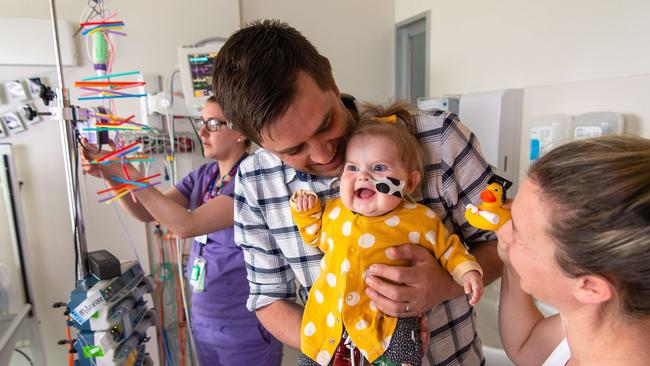
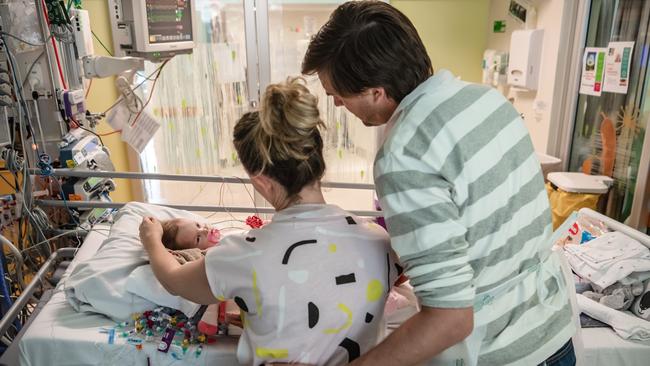
The RCH — as the National Paediatric Heart Transplant Centre — had not put infants under the age of one onto a long-term Ventricular Assist Device before 2013.
A Berlin heart, an artificial heart that sits outside the body and takes over the function of the organ, would keep Ellie alive until a suitable donor heart became available.
Almost two thirds of all heart transplants are now performed in children on artificial hearts, with 24 infants under the age of 12 months having been supported on VAD in the past six years.
The Berlin Heart is not only keeping babies alive for long enough for a donor to be found, but the device also allows them to reach transplant in better shape so the surgery is less risky.
The children and families on VAD are known as the warriors of the cardiac ward, even by other families who hand their babies over for open heart surgery on the first day of life.
Heart transplant families are the few to understand the cruel reality that hoping for new life means waiting for death.
This bridge to transplant on VAD is a highly restrictive life, and not without risks.
These children cannot leave hospital until a new heart is found.
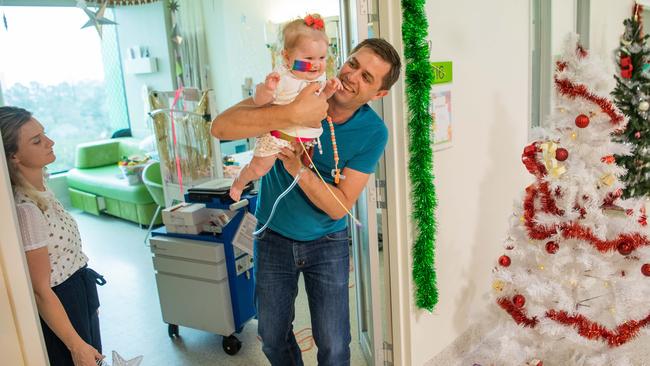

There is a 30 per cent chance the device could cause a stroke or infection that sees them ineligible for transplant.
The VAD, a 160kg washing machine-sized device connected to the child, sounds a shrill alarm every 10 minutes as a reminder when it is unplugged from the wall.
The device has a 30 minute battery life, keeping families largely to their rooms and doing laps of the ward for the weeks or months they are waiting.
Life is generally restricted to the hospital bed, a playmat on the floor, trips around the ward.
It is a logistic effort to move Ellie anywhere. Even going from one side of the room to the other is done with stuntman-like precision, each step plotted in advance to avoid setting off the trip wire of lines and cords snake out the bottom of her T-shirt like a tangle of spaghetti.
The Berlin Heart, a U-shape blood-red pump the size of an adult’s hand, pokes out between the press studs of her floral wondersuit.
For Ellie’s first birthday, the party location needed to be determined based on the room having enough power points to accommodate all the kids attached to artificial hearts.
There were two heart transplants in the first two weeks the Martins arrived at the RCH.
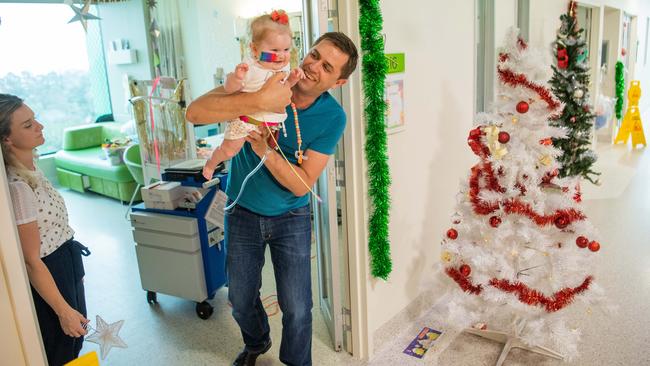
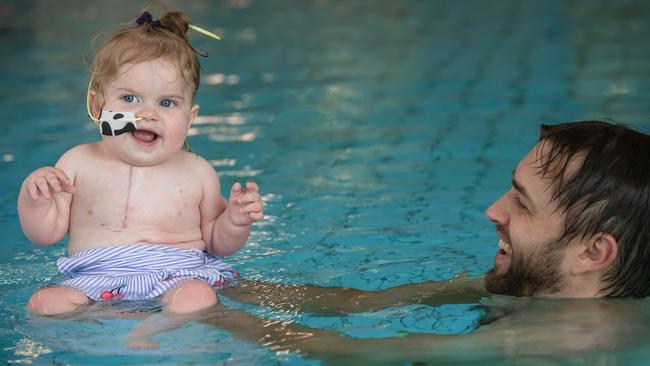
But come Christmas, Ellie has spent just over 100 days with an artificial heart and more than 300 days in hospital.
The other families waiting for a new heart that they came to share the ward with over the next year, had never seen a transplant happen. It started feeling like a myth, and a reality that many parents stopped letting themselves think about.
It is a monotonous and exhausting life confined to their hospital room; one striped of privacy and any chance to bond uninterrupted as a family.
A team of VAD co-ordinators, ward nurses, physicians and surgeons are responsible for bedside monitoring and the frequent adjustment of VAD settings.
As always, parents of children on VAD play a central role in the care of their children.
Each day, both Andrew and Kylie stay with Ellie until she goes to sleep.
They eat a takeaway together, or a dinner brought in by family or friends, before one sleeps on the couch in the hospital room and the other walks back to their Parkville apartment, only to be back by 8am to repeat the process day after day.
Each day they are supported by a team of nurses, doctors, surgeons and therapists, but rallying with renewed strength and hope during one of the longest droughts for paediatric heart transplants is a challenge when you don’t know when you’ll reach the finish line.
On a routine ward round the week before the transplant, cardiac surgeon Yves d’Udekem — the person who just one week later would wheel the esky carrying Ellie’s new heart from a police car to surgeon Christian Brizard in the operating theatre — stopped in on the Martins.
“It would be so good if she could know there was a whole world out there,” he told the couple.
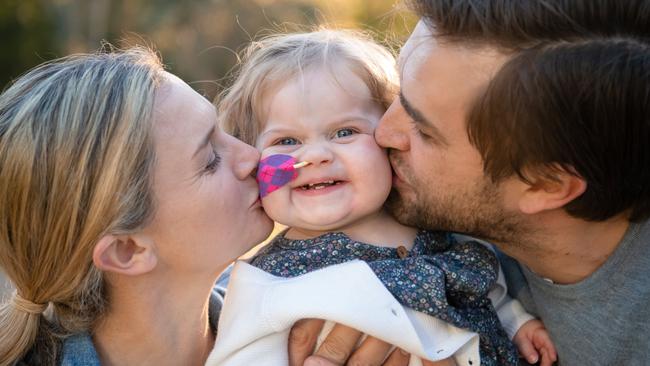

After enduring more than 400 days living in this suspended reality — a twilight zone between life and death — Ellie’s day finally came.
Ellie starts each day now beating her chest like Tarzan. She will look for the zipper scar on her chest when prompted.
The furthest Ellie has been from Parkville is St Kilda pier on a recent family day trip.
Her favourite place to sit is on her dad’s shoulders. When outside Ellie raises her arms above her head and stretches them out in wonder, relishing the wide world that Yves promised was out there.
Andrew only needs to turn his head slightly to rest his ear on his daughter’s chest to hear her heart beating strong; a gift of life from a grieving family.
“I really struggled thinking about the donor pre-transplant,” said Andrew.
“For us, that long awaited news is joyous news, almost like we’re getting reborn. But you know on the other side of the fence is a family getting told they have to say goodbye.”
Many of Ellie’s challenges are now just beginning.
After spending a year largely bed-bound, hooked up to tubes, lines and monitors, the 18-month-old bum shuffles to get around.
Physiotherapists from the RCH are supporting Ellie as she faces her next challenge of learning to crawl and walk.
MORE NEWS:
NZ VICTIM’S FAMILY: ‘IT’S OUR WORST NIGHTMARE’
HOW SHARENTING IS DAMAGING YOUR KIDS
SPEECH STUDY TO SEEK CLUES TO STUTTERING
She is starting to put food in her mouth, but not yet swallow, as she relies on a gastric feeding tube for all her nutrition.
But now out of hospital and living under the same roof for the first time in more than a year, the Martins are throwing everything behind giving Ellie the best chance to do herself and her donor heart proud.
“An organ transplant literally gives someone a life,” Ms Martin said.
“It’s a second chance at life, but for her it’s almost like her first chance at a real life.”
To register as an organ donor go to donatelife.gov.au


